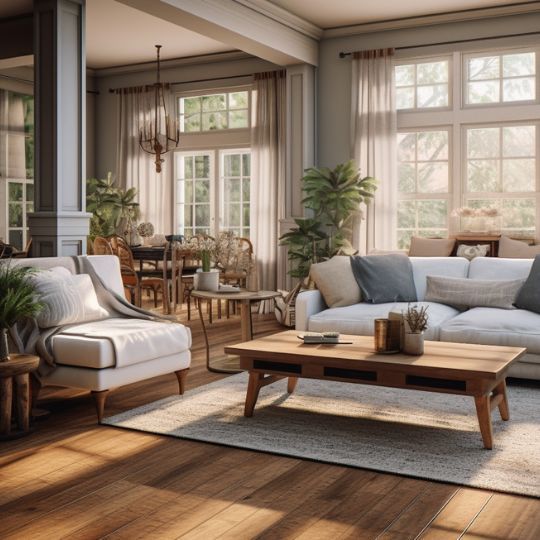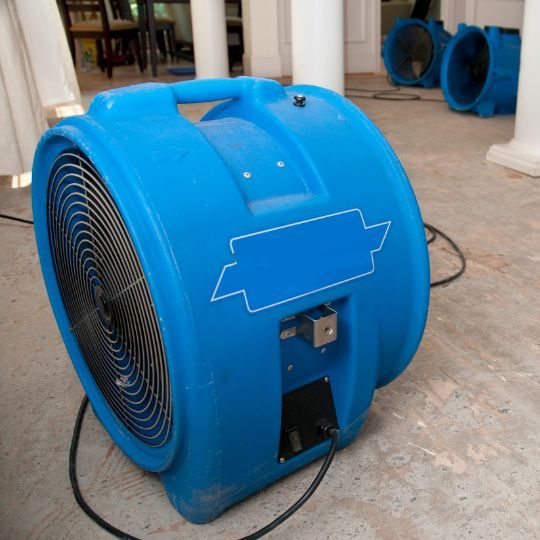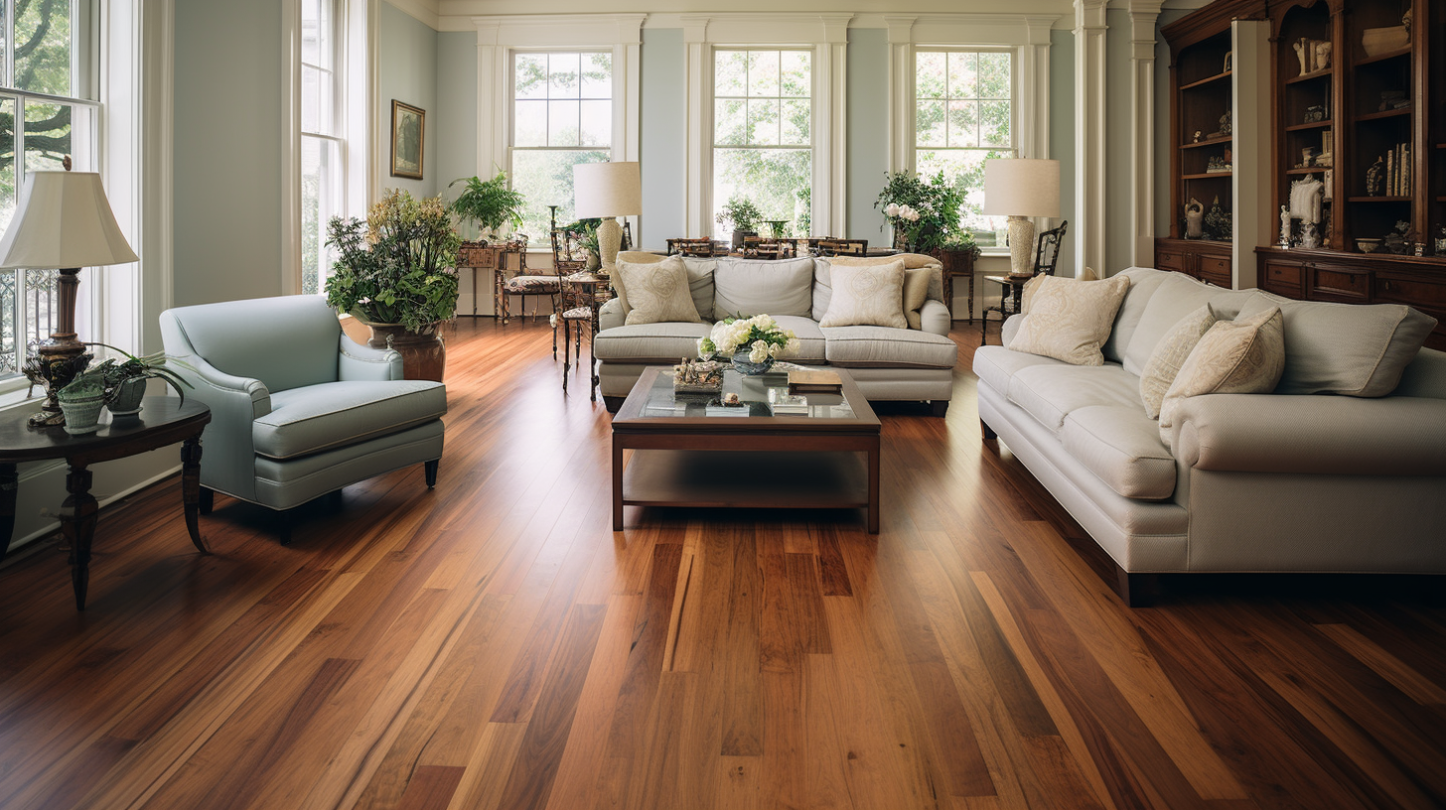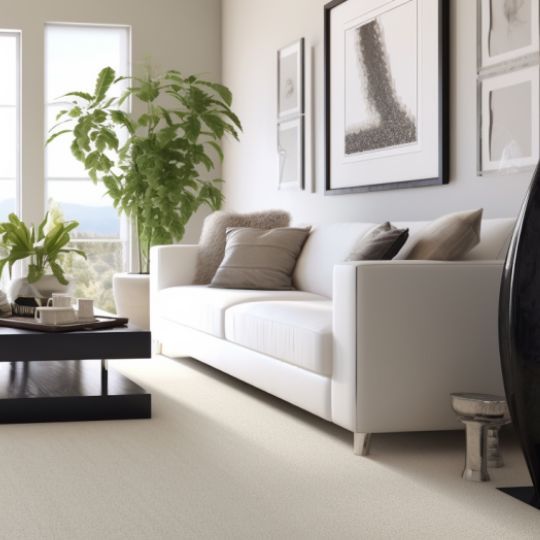Ice, Salt, and Snow: How to Keep Winter Debris off Your Hardwood Floors
The harmful effects of salt on hardwood floors have the potential to cause irreparable long-term damage, but there are effective tools to combat ice and snow residue, preventative measures for keeping hardwood debris-free, and restoration tips for reviving winter-affected hardwood so that you can protect, preserve, and restore your floors.
The Harmful Effects of Salt on Hardwood Floors
Salt has long been used for its moisture retaining properties in the preservation of hardwood floors, however it can also be incredibly damaging, especially when used for extended periods of time. Salt will draw moisture into the hardwood floor when applied as part of a deicing treatment, for instance. This moisture will enter into the gaps and joints between the floorboards and cause swelling. Moreover, as the moisture evaporates, mineral deposits are left behind and can form unsightly marks on the surface of the flooring.
Additionally, saltwater can be corrosive and damage any metals attached to the hardwood. Floorboards can become detached or weakened when their screws or nails, for instance, corrode and rot. On the other hand, some types of flooring may be treated with protective sealants which can help to protect against salt damage, however this may need to be reapplied if the surface has been exposed to salt over a long period of time.
Furthermore, not all sealants will be effective against saltwater damage, therefore it is essential to choose the best product available from a reputable supplier. In addition, some conventional cleaners and sealants may not be suitable for use on floors that have been exposed to salt. Therefore, it is very important to use products that are specifically designed for hardwood floors that have been exposed to salt.
In contrast, it is possible to restore hardwood floors that have been affected by salt. Similarly, most manufacturers will recommend sanding down the surface of the floor in order to remove salt deposits and reveal a fresh layer of wood beneath. As a result, a new layer of sealant can then be applied to protect the floor in the future. Consequently, it is always wise to follow the instructions provided by the manufacturer in order to keep your hardwood floor looking as good as new.
Effective Tools to Combat Ice and Snow Residue
Effective tools to combat ice and snow residue can be the difference between a safe and slick potential hazard. However, there is no one best tool for every situation and surface; effective tools depend on the type of surface being treated and the size of the residue. For instance, anyone should keep in mind whether the area being treated is exposed to the elements and whether they are prone to shock or vibration.
For a large expanse like a parking lot or driveway, sand or road salt are popular de-icers. Sand can help provide grip and traction to tires, while road salt can help melt snow or ice when mixed with water. Moreover, a more organic option like calcium magnesium acetate (CMA) can provide de-icing with fewer environmental impacts. CMA is less toxic, will not corrode surfaces, and helps keep roadways safe for longer.
In contrast, smaller, less exposed surfaces, like a sidewalk, ladder or porch, should be treated with a more precise tool, such as an ice chopper, de-icing spray, or heated stair mats. Ice choppers are a handheld tool used to chip away ice from hard surfaces, while heated stair mats help to keep ice free without having to apply a substance. Similarly, de-icing sprays provide a quick, ready-to-use method for mostly flat surfaces, such as walkways, stairs, and porches. As a result, any surface can find a tool to keep it safe during winter.
Lastly, if the surface is especially corrosive, areas exposed to the elements should be treated with more heavy-duty chemicals, such as calcium chloride and magnesium chloride. These two chemicals are commonly used on highways and serve to provide both an anti-icing and de-icing effect. Furthermore, both are soluble in water and are safe for soil and plants, making them an ideal option for areas near vegetation or ponds.
Consequently, effective tools to combat ice and snow residue should be chosen with the size of the surface and its susceptibility to treatments in mind. With the right tool and application, anyone can ensure that icy surfaces are safe and sound.
Preventative Measures for Keeping Hardwood Debris-Free
Preventative measures for keeping hardwood debris-free involve both regular maintenance and proactive efforts. Vacuuming and sweeping are two of the most important preventative measures you can take in order to keep hardwood floors from becoming covered in debris. Vacuuming helps to remove dirt, hair and other particulates, while sweeping removes larger debris. Additionally, using doormats and area rugs at any entrances into a house can help trap dirt and prevent it from entering the main living space.
Furthermore, it is important to apply a finish to hardwood floors, as this will add a protective layer that can help to prevent dirt and small particulates from sticking to the floor. On the other hand, over-applying a finish can lead to a buildup of residue, which may need to be removed in order to keep the floor clean. Similarly, using furniture protectors, such as felt pads and furniture cups, may help to stop debris from transferring from furniture to the hardwood floor.
In addition, it is important to regularly mop the floor in order to remove any particulates that have been left behind. Using a mop and a mild cleaning solution can be effective in keeping hardwood floors clean. Changing the air filters located in your air conditioning and furnace units on a regular basis can also help create an environment that is free from dust and debris.
Therefore, consistent maintenance and proactive efforts are some of the most important preventive measures to take in order to keep hardwood floors free of debris. However, paying close attention to the different areas of the home and taking the time to clean and recondition your hardwood flooring on a regular basis will also help to keep your hardwood debris-free. As a result, following these measures carefully will allow you to get the most out of your hardwood floors and ensure that they remain free of debris.
Restoration Tips: Reviving Winter-Affected Hardwood
Restoring hardwood floors can be a challenge if it has been affected by the cold winter weather. The cold temperatures can leave hardwood floors looking dull and lifeless. However, there are several easy steps to take to help restore the beauty of your hardwood floors.
First, you should begin by vacuuming any loose dirt that may have accumulated over the winter months. In addition, you may want to use a damp cloth to remove any dust or dirt that may have settled into the grooves and crevices of the hardwood paneling. This will help to get rid of any material that could act as an abrasive on the hardwood’s surface.
Next, it is important to clean, seal, and refinish your hardwood floors. This should be done with an appropriate all-in-one hardwood cleaner/sealer product. To ensure that the finished product looks great, you should use a specialized hardwood floor buffer to help spread the product evenly across the surface area. The buffer also helps to add shine to the finish.
Finally, once the hardwood floors have been restored, you should maintain their beauty by regularly vacuuming or cleaning them, as well as following any other manufacturer’s recommendations. After all, it is hard work to revive winter-affected hardwood; therefore, it is important to regularly maintain its condition.
Overall, there are simple restoration tips for reviving winter-affected hardwood floors. By following the steps above, you can restore the look and feel of your hardwood floors and keep them looking their best.
Final Thoughts
In summary, the harmful effects of salt on hardwood floors can be significant, as salt can affect wood floors by causing discoloration and rotting, as well as warping and cracking. To prevent damages caused by ice and snow, effective tools such as snow shovels, ice scrapers, and protective mats can be used. Additionally, preventative measures such as keeping the floors free of debris and establishing safety guidelines can help reduce the risks. Finally, restoration tips, such as deep cleaning and restoring the floors with mineral oils, can help breathe new life back into winter-affected hardwood floors. Taking all of these measures combined will help ensure that your hardwood floors remain well-protected and damage-free throughout the cold winter months.
Frequently Asked Questions
Why is salt damaging to hardwood floors?
Salt can damage hardwood floors because it tends to absorb moisture from the air. The moisture contributes to warping and swelling of the wood, which can cause cracks, splintering, and other forms of damage. Salt can also speed up the natural aging of the wood, leading to faded or discolored areas over time.
How can I prevent snow and ice from reaching my indoor floors?
There are a few ways to prevent snow and ice from reaching your indoor floors:
1. Invest in a quality doormat and place it directly outside of your door(s). This will help to catch most of the snow and ice that would have otherwise been tracked indoors.
2. Position heated floor mats near any entryways that will be exposed to snow and ice. The mats will help to melt off the snow and ice before it reaches the indoors.
3. Install door sweeps or thresholds on your exterior doors. This will help to create a solid barrier between your indoor floors and the outside elements.
4. Place a rug or other protective covering near any potential entry points. This will help to catch any snow and ice that may not be picked up by the doormat or melted by the heated floor mats.
5. If possible, seal off any open areas below your door(s) that could provide an entry point for snow and ice to enter the indoors.
What cleaning agents are safe for winter hardwood floor maintenance?
For winter hardwood floor maintenance, it is best to use a cleaning agent that is specifically designed for hardwood floors. There are numerous types available, but some common safe cleaning agents are: water-based cleaners, hardwood cleaner and polish, and mineral spirits. Additionally, it is important to vacuum and sweep the floors regularly with a soft-bristled broom to keep dirt and dust from accumulating and scratching the wood.
Are there specific mats or rugs recommended for snowy and icy entryways?
Yes, there are specific mats or rugs that are recommended for snowy and icy entryways. Mats that are designed for snowy and icy conditions have ridges or deep grooves to help trap snow and disperse water away from the entryway. Additionally, door mats made of rubber are best as they are highly durable and slip-resistant. You can also try using an entryway rug combined with the rubber door mat to provide additional warmth and insulation.









